Stir frying is one of the world's great cooking techniques. It's fast, can create hugely divergent types of dishes with a tremendously diverse array of flavors, and it's relatively simple. With just a little guidance, even someone who has never stir fried before can achieve great results. Whether you like to cook simple, mildly seasoned vegetable dishes, or big, robust, spice and fat laden delicacies, stir frying has you covered.
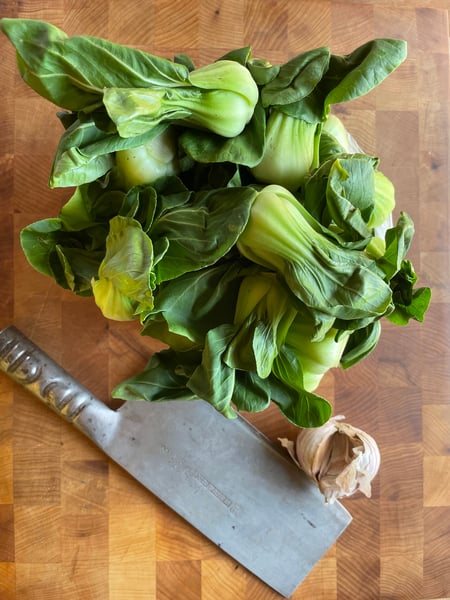 Stir frying is such a fast process once you get going that you really need to make sure you’re prepared with all your ingredients measured out, prepped and ready to go (a process the French term “mise en place”). Once you have all your ingredients prepped and organized, make sure you have your tools at the ready, and preheat your wok. Let your wok get hot until you can see light smoke coming off the surface of the pan. This will let you know your wok is hot enough to start cooking.
Stir frying is such a fast process once you get going that you really need to make sure you’re prepared with all your ingredients measured out, prepped and ready to go (a process the French term “mise en place”). Once you have all your ingredients prepped and organized, make sure you have your tools at the ready, and preheat your wok. Let your wok get hot until you can see light smoke coming off the surface of the pan. This will let you know your wok is hot enough to start cooking.
In general, most stir fries will follow a few basic steps. First, if your dish uses a protein of some kind this will usually get seared off first, then removed before building the rest of the dish. This step is followed by cooking the aromatics (usually some combination of garlic, ginger, scallions and/or chilies), then any veggies will get quickly cooked. After this the protein is returned to the pan, followed by a flavorful sauce which is usually thickened by a starch slurry. Lastly, if your dish calls for any tender herbs like scallion tops or cilantro, these are usually added at the very end. Of course, Chinese cuisine is unbelievably diverse and varied, so there are almost as many exceptions to these guidelines as adherents, but this rough order will help you navigate a great many of the fast paced stir fries you’re likely to attempt.
Before we get into method, however, let's take a brief detour to talk about equipment. You don’t need much other than a wok to get started, but there are a couples things that will definitely make your life easier. My most used tools are pictured below.
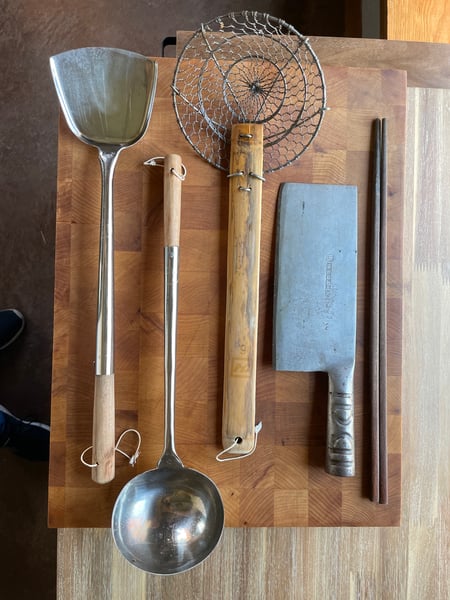 From left to right they are: Wok spatula, Wok ladle, spider, Chinese cleaver and long wooden cooking chopsticks. While all these tools are fairly inexpensive, and can usually be found at most Asian grocery stores, you definitely don’t need all of them to start stir frying. In fact, since stir frying is mostly about tossing the food anyway, you could probably get away without any of them if you really wanted to. That said, there are a couple that I find really useful when cooking in a wok:
From left to right they are: Wok spatula, Wok ladle, spider, Chinese cleaver and long wooden cooking chopsticks. While all these tools are fairly inexpensive, and can usually be found at most Asian grocery stores, you definitely don’t need all of them to start stir frying. In fact, since stir frying is mostly about tossing the food anyway, you could probably get away without any of them if you really wanted to. That said, there are a couple that I find really useful when cooking in a wok:
The first is the wok spatula. This is by far my most commonly used tool for stir frying. Its long handle, and curved leading edge make it ideal for manipulating ingredients in the bowl shaped wok. If stir frying is all you ever do in your wok, this is really the only thing I’d call essential.
- The wok ladle I use for transferring large amounts of liquids like broth or oil into and out of my wok. Good for soupy dishes, or some frying techniques.
- The spider is my favorite tool for manipulating foods I'm deep frying while they’re in the oil, and for removing them from the oil once they’re done.
- The cleaver is just a personal preference for prepping ingredients. Any knife will work, but the cleaver does offer some benefits like being able to crush multiple cloves of garlic at once.
- Lastly, the long wooden chopsticks allow me to move things around in the wok with a bit more dexterity, whether I’m stir frying, deep frying, braising or steaming.
Now that we have a handle on the accessories we might need, let's take a look at an actual stir fry recipe. To start, we’ll go through the steps of a very simple stir fry dish: stir fried baby bok choi.
I'm using a charcoal wok burner here, which gives me a lot of firepower, and some open flame to produce the smoky wok hei flavor you get from Chinese restaurant kitchens. If you don’t have a high powered wok burner, you can definitely still achieve great stir fry on your home burner. Just cook in smaller batches, and preheat (until lightly smoking) your wok so it's nice and hot before you get going. If you’re on a gas burner this, combined with tossing, might be enough to get some amount of wok hei in your stir fry. If you’re on induction or resistance coil electric, you can still get wok hei by holding a blow torch above your wok and tossing your food through it (this may sound insane, but its actually simple and easy. It's how I solved this problem when cooking stir fry dishes in a restaurant I was running in Boston many years ago.)
As I mentioned above, the first step in any successful stir fry is to get yourself organized and get all your ingredients measured out and prepped.
Stir Fried Baby Bok Choi
Scroll down for a printable version of this recipe
Serves: 4 as a side dish
Prep time: 15 minutes
Cook time: 5 minutes
24 oz. baby bok choi, trimmed into leaves and stems and blanched in lightly salted water until bright green and just tender (30-45 seconds)
1 Tablespoon soy sauce
1 Tablespoon sweet soy sauce
1 Tablespoon water
1 teaspoon cornstarch
1 Tablespoon cooking oil
6 cloves garlic, minced
1 1/2 Tablespoons fresh ginger, minced
1 teaspoon sugar
1/2 teaspoon freshly ground black pepper
1. Mix the two soy sauces with the water and cornstarch (this will be the sauce). Place everything in its own container so it's ready to be added to the stir fry at a moments notice.
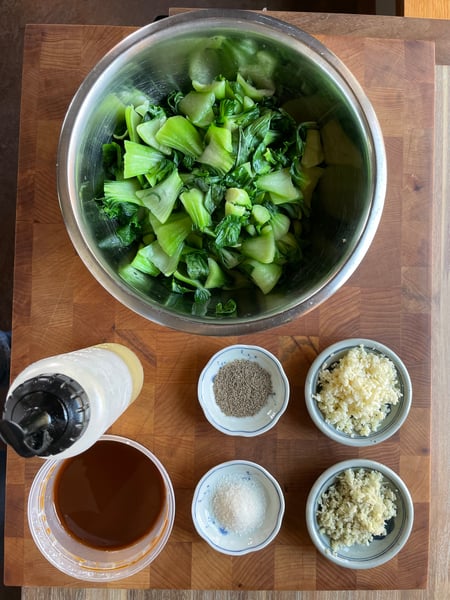 2. From here things will go quickly. Heat your wok until you can just see a bit of light smoke coming off the surface of the pan. Add your oil by pouring it around the sides of the wok so it slowly flows to the bottom.
2. From here things will go quickly. Heat your wok until you can just see a bit of light smoke coming off the surface of the pan. Add your oil by pouring it around the sides of the wok so it slowly flows to the bottom.
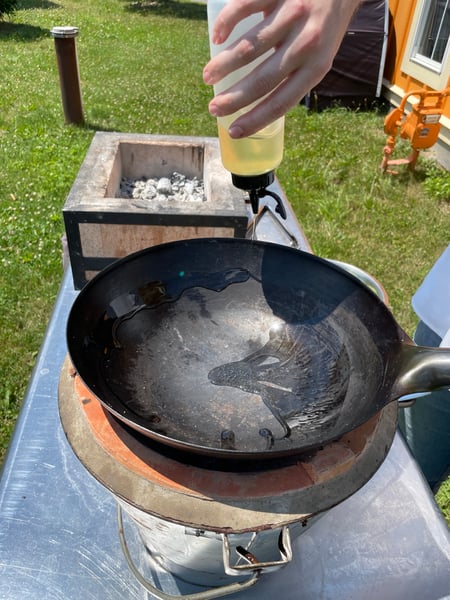 3. It will start smoking quickly, so immediately add your garlic and ginger, and stir fry until fragrant and not very browned.
3. It will start smoking quickly, so immediately add your garlic and ginger, and stir fry until fragrant and not very browned.
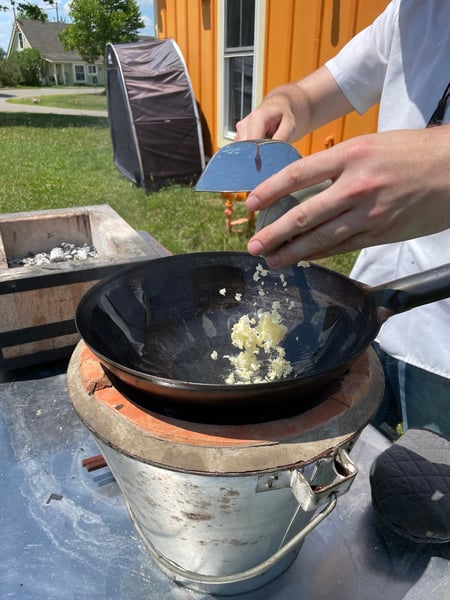
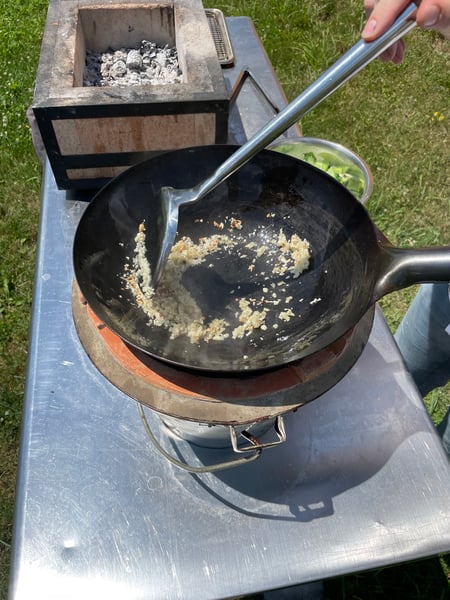 4. Add in the blanched bok choi and toss through to distribute the aromatics and develop some smoky wok hei flavor. This step should take about 1 minute.
4. Add in the blanched bok choi and toss through to distribute the aromatics and develop some smoky wok hei flavor. This step should take about 1 minute.
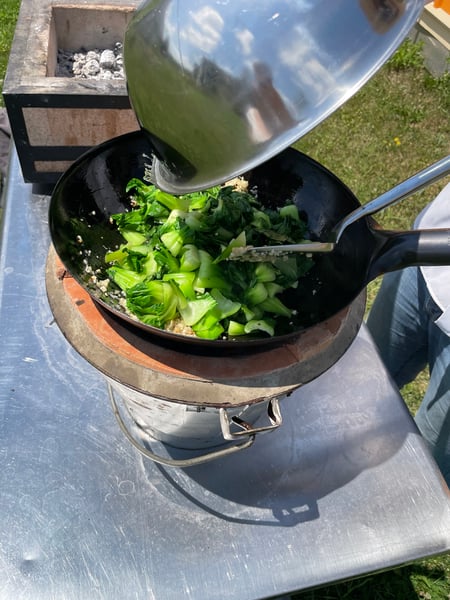
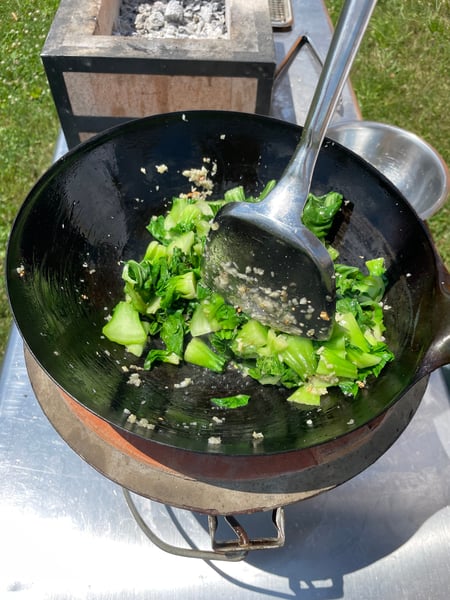
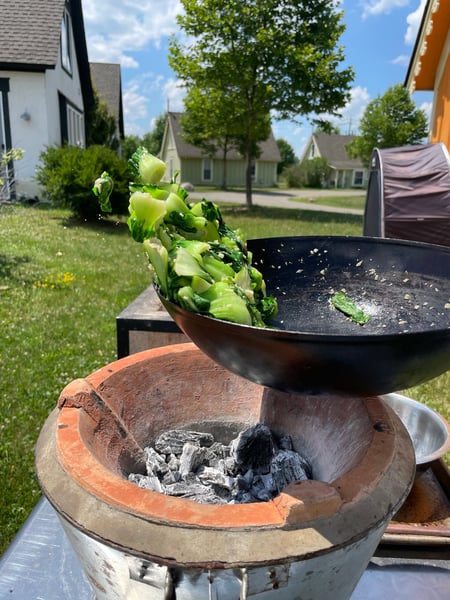 5. Add the sugar, pepper, then stir the sauce mixture to redistribute the corn starch before adding to the wok by pouring around the sides.
5. Add the sugar, pepper, then stir the sauce mixture to redistribute the corn starch before adding to the wok by pouring around the sides.
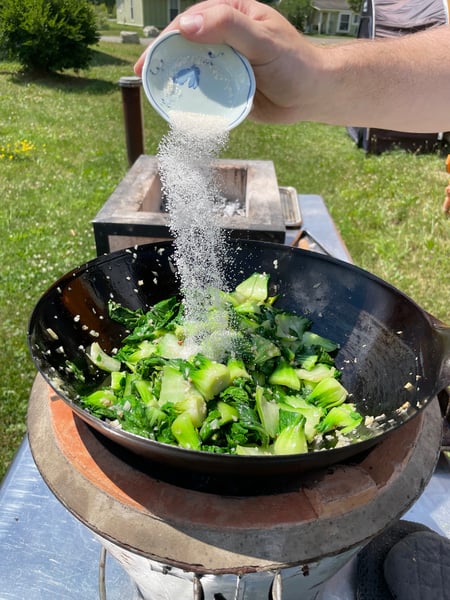
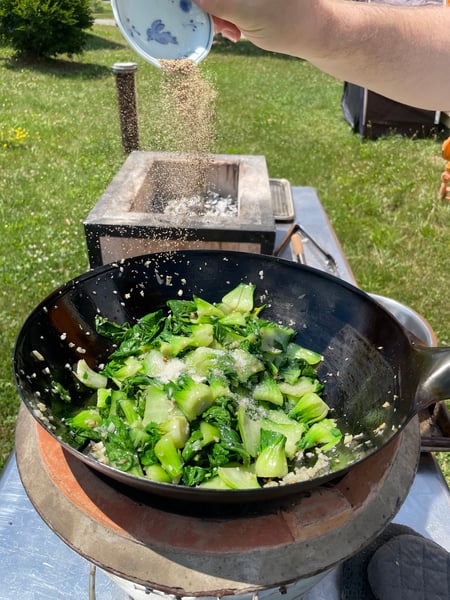
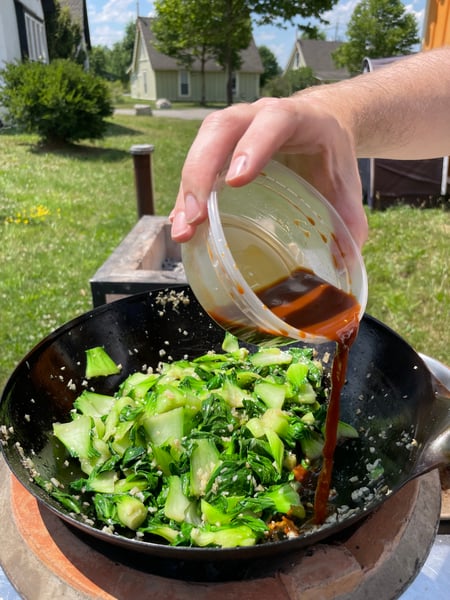 6. Let the sauce come to a simmer and thicken until the bok choi is coated in a glossy, lightly thickened sauce. Transfer to a serving dish and consume ASAP. Congrats, you just made a delicious healthy meal in about three minutes (not including prep time).
6. Let the sauce come to a simmer and thicken until the bok choi is coated in a glossy, lightly thickened sauce. Transfer to a serving dish and consume ASAP. Congrats, you just made a delicious healthy meal in about three minutes (not including prep time).
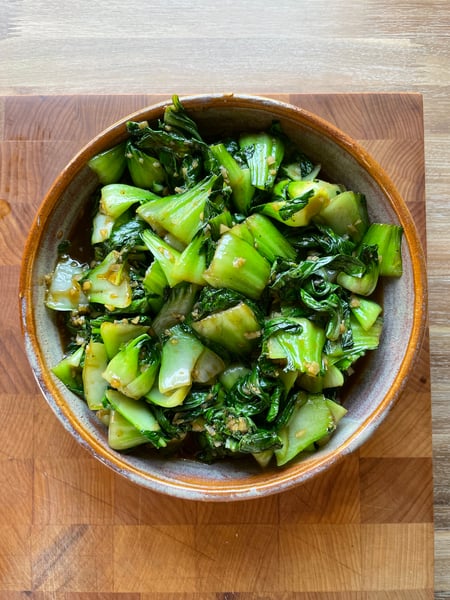 Now that you have the skills you need to dive even deeper into this incredible technique, I hope you’ll be inspired to try out some slightly more involved stir fry dishes like chow fun, or yu Xiang eggplant, or dry fried green beans, or literally thousands more.
Now that you have the skills you need to dive even deeper into this incredible technique, I hope you’ll be inspired to try out some slightly more involved stir fry dishes like chow fun, or yu Xiang eggplant, or dry fried green beans, or literally thousands more.
And if you enjoy learning the ins and outs of all sorts of cooking techniques, consider signing up for our upcoming Culinary Boot Camp, Essential Building Blocks course, or one of our topic by topic virtual Building blocks classes:
- Egg Cookery Saturday, July 30 10am CST
- Fish Butchery and Cookery Saturday, August 6 10am CST
- Pork Cookery Saturday, August 13 10am CST
- Potatoes and Legumes Saturday, August 20 10am CST
- Mother Sauces Saturday, August 27 10am CST
- Soups Saturday, September 3 10am CST
- Chicken Butchery and Cookery Saturday, September 10 10am CST
- Beef Cookery Saturday, September 17 10am CST
- Vegetable and Rice Cookery Saturday, September 24 10am CST
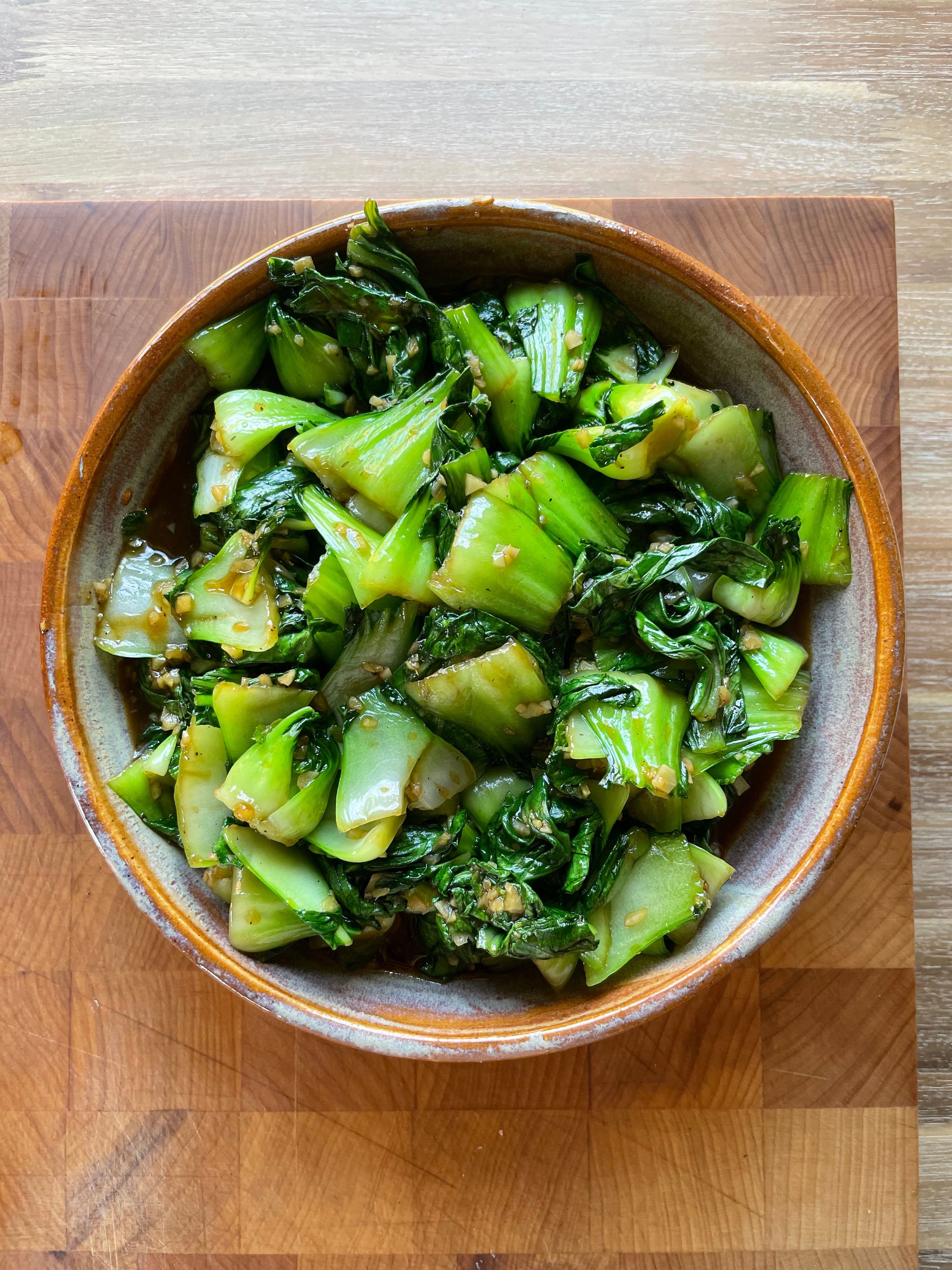
Stir Fried Baby Bok Choi
Ingredients
- 24 oz. baby bok choi, trimmed into leaves and stems and blanched in lightly salted water until bright green and just tender (30-45 seconds)
- 1 Tablespoon soy sauce
- 1 Tablespoon sweet soy sauce
- 1 Tablespoon water
- 1 teaspoon cornstarch
- 1 Tablespoon cooking oil
- 6 cloves garlic, minced
- 1 1/2 Tablespoons fresh ginger, minced
- 1 teaspoon sugar
- 1/2 teaspoon freshly ground black pepper
Instructions
- Mix the two soy sauces with the water and cornstarch (this will be the sauce). Place everything in its own container so it's ready to be added to the stir fry at a moments notice.
- Heat your wok until you can just see a bit of light smoke coming off the surface of the pan. Add your oil by pouring it around the sides of the wok so it slowly flows to the bottom.
- It will start smoking quickly, so immediately add your garlic and ginger, and stir fry until fragrant and not very browned.
- Add in the blanched bok choi and toss through to distribute the aromatics and develop some smoky wok hei flavor.
- Add the sugar, pepper, then stir the sauce mixture to redistribute the corn starch before adding to the wok by pouring around the sides.
- Let the sauce come to a simmer and thicken until the bok choi is coated in a glossy, lightly thickened sauce. Transfer to a serving dish and consume ASAP.











